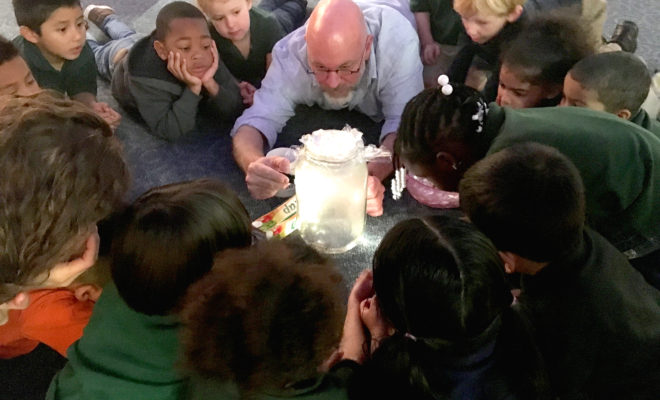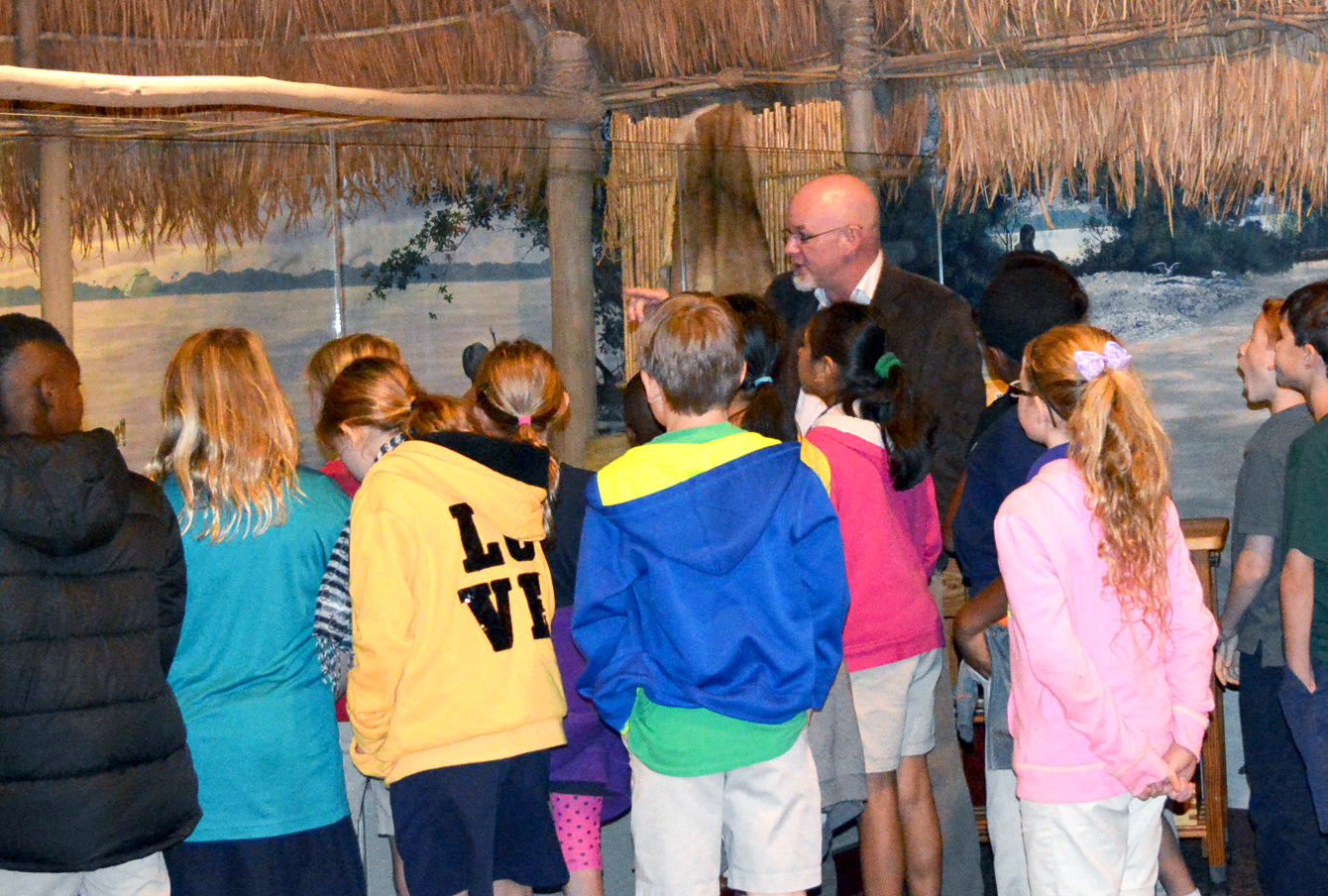
Education
Education Matters: South Florida Museum
By Ryan G. Van Cleave
I’ve been a member of the South Florida Museum for nearly two years now and I’ve been visiting it off and on for nearly eight years, so it’s fair to say I know more than the average person about this wonderful venue in downtown Bradenton. Given that, let me share five nifty things about it:
1. South Florida Museum is the largest natural and cultural history museum on the Gulf Coast.
2. It has a Manatee Rehabilitation Program.
3. The Bishop Planetarium is the region’s premier astronomy education facility, though it’s also a “multimedia theater for films, lectures, live music, and digital art performances.”
4. They participate in a reciprocal program, so my $100 membership allows me to take my family of four to hundreds of other museums in the US for free or a greatly reduced rate.
5. They have all kinds of cool educational programming for community members.
While #1-4 are all interesting and certainly worthy of further investigation, the aspect that I want to focus on this month is #5. This is Education Matters, after all!
To that end, I spoke with Director of Education Tish Sacks to learn a bit more about the education opportunities there.
Tish seems born for this job. She practically grew up in a museum about the same size of South Florida Museum—her mother was a curator there, so Tish went to work with her often and helped man tables at special events. Tish went on to get a degree in zoology and a master’s in teaching, then taught high school for some time, and worked in Seaworld’s education department for eight years before connecting with the South Florida Museum. “It’s great for me,” she says about working here. “I’m interested in all types of science and we do all of that. Environmental. Fossils. Astronomy. Earth science. Marine mammals. It’s all connected. You can’t really understand manatees, for example, unless you understand the water cycle. You can’t really understand fossils unless you understand geology and biology.”
One of the programs to get kids as interested in science as Tish is IQuest, a monthly science and art enrichment program for middle school students. It takes place on the second Saturday of most months from 4:00 – 8:00 p.m. and only costs $5 (which gets kids pizza and drinks, too). Let’s be clear—my daughters have been involved with this program for years and they love it. They like to tinker and problem solve, and that’s exactly what this program invites.
Each month, the topic and theme changes. July’s topic is Project Upcycle, where kids discover what they can build from what’s being thrown away. How can you create something useful or functional from trash? Great question. August’s theme ties in with a new Smithsonian Institution Traveling Exhibition at the museum called “Things Come Apart,” which is a STEM-based exploration into the inner workings of common, everyday possessions like a record player, Walkman, and iPod. Connecting with that idea of deconstruction, the IQuest plan for that month is to use the leftovers from the previous month—where they’ll be dismantling old radios and other things—and create art projects from those loose bits and pieces.
“What’s really great about IQuest,” Tish explains, “is that we have time to do big projects that wouldn’t fit in a school period. They’re here for four hours, so we might give them a project or challenge that takes 45 minutes to an hour to solve, even when they’re working in teams. That’s a great way to explore and learn.”
But education isn’t just for kids. Teens and adults can get involved, as well, through a program like Lunch and Learn that happens on the second and fourth Wednesday of every month, from 12:15 to 1:00p.m.
“It’s a quick-hit opportunity to learn from our museum staff,” says Tish. It only costs $3 and you bring your own bag lunch to eat while you listen to a 45-minute presentation from museum staff on an area/aspect of their expertise. The topics range quite widely. Some highlight objects in the collection that aren’t seen every day or aren’t noticed. Some are about current research being done. “It’s a mixed bag,” Tish says, adding that “I recently did one on the senses. We talked about how they actually work and that we don’t really have five—we have far more than that. I think people left with a different perspective on sensory perception.”
Another program that’s directed exclusively at an adult crowd is the evening Think and Drink. For this program, which takes place in the planetarium at 7:00 p.m. the second Wednesday of every month, outside guest experts—typically from our local community—deliver informal talks on a range of science topics, such as history, engineering, biology, or medicine. It’s a chance to meet and engage with a local scientist while learning about some science that happens right here in our own backyard. All while drinking wine or beer (available at a nominal charge).

Ultimately, Tish simply wants people to know that the South Florida Museum is a great, close-by opportunity to really immerse yourself in the world of science. This is an easy, interesting way to see how science connects to your everyday world. “You can see it all right here,” she said, noting that another advantage is that the museum isn’t huge. “It’s really rare to go into a place where you happen to run into the curator and then are able to ask questions right on the spot. That happens here all the time.”
These reasons are exactly why I have an annual membership. Whether I’m going for fossils, manatees, the planetarium, or the programming, it’s all in one place—the South Florida Museum.
(Did I mention that the parking is easy and free, too? How often can you say that about a museum?)
FOR MORE INFORMATION about South Florida Museum’s Outreach and Education programming, please visit www.southfloridamuseum.org or call 941.746.4131.




You must be logged in to post a comment Login